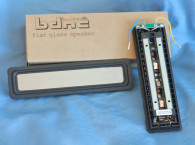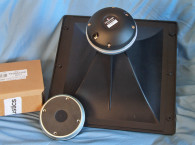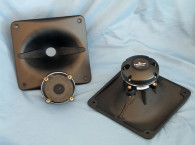Designed for use with 1.0” throat horns, the CDX1-1412 is the latest uber compact (just 2.4” in diameter and only 1.4” deep) neo compression drivers from Celestion. This compression driver has a 25mm (1”) throat diameter driven by a 34mm (1.4) diameter voice coil wound with a round copper-clad aluminum wire (CCAW) on a non-conducting former driving a single piece polyimide diaphragm and surround.

Other features include a FEA-optimized neodymium ring magnet motor structure, a nominal power handling of 35W with a 70W continuous power handling rating, a 2kHz recommended crossover frequency (with a minimum 12dB/octave high-pass network), and 1W/1m 106dB sensitivity (measured 2π on a typical horn), and a two-bolt M5 mounting configuration.
Along with the CDX1-1412, Celestion supplied its new 1” H1-9050 90° × 50° constant directivity horn (Photo 1). While I received a third printed copy for testing, the H1-9050 should be in production by the time you read this report.
Testing began using the LinearX LMS analyzer to produce the 300-point stepped sine wave impedance plot shown in Figure 1, with the solid black curve representing the CDX1-1412 mounted on the H1-9050 horn and the dashed blue curve representing the compression driver without the horn. With a nominal 8Ω impedance, the CDX1-1412 had 6.26Ω DCR, with minimum impedance mounted on the H1-9050 horn of 7.6Ω and at 6.1kHz.

For the next set of SPL measurements, I free-air mounted the Celestion CDX1-1412/H1-9050 combination without an enclosure and measured both the horizontal and the vertical on- and off-axis at 2.0V/0.5m (normalized to 2.83V/1m) from 0° on-axis to 60° off-axis using the Loudsoft FINE R+D analyzer and the GRAS 46BE microphone (supplied courtesy of Loudsoft and GRAS Sound & Vibration). Figure 2 displays the on-axis frequency response of the compression driver/horn, which is relatively smooth with no major anomalies from the 2kHz recommended crossover frequency (minimum 12dB/octave) to about 20kHz, with the typical downward sloping response of a constant directivity horn and with no major anomalies or break-up peaks.



Figure 3 shows the 0° to 60° on- and off-axis response in the horizontal plane. Figure 4 displays the normalized horizontal plane response. Figure 5 shows the 180° horizontal polar plot (in 10° increments with 1/3 octave smoothing applied) generated by the CLIO Pocket analyzer and accompanying microphone (courtesy of Audiomatica SRL). Figure 6 gives the on- and off-axis 0° to 60° response in the vertical plane. Figure 7 depicts the normalized vertical plane response. Figure 8 shows the CLIO Pocket-generated 180° vertical plane polar plot (also with 10° increments with 1/3 octave smoothing applied). Last, Figure 9 illustrates the two-sample SPL comparison showing the two compression driver samples to be closely matched within 1dB or less above the recommended crossover frequency of 2kHz to 20kHz.
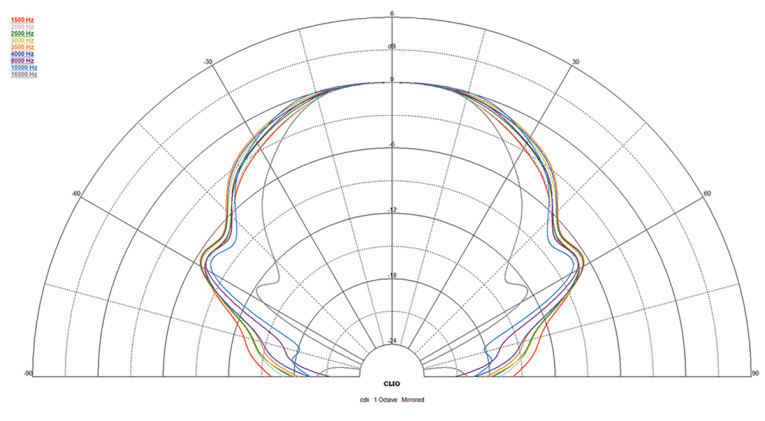


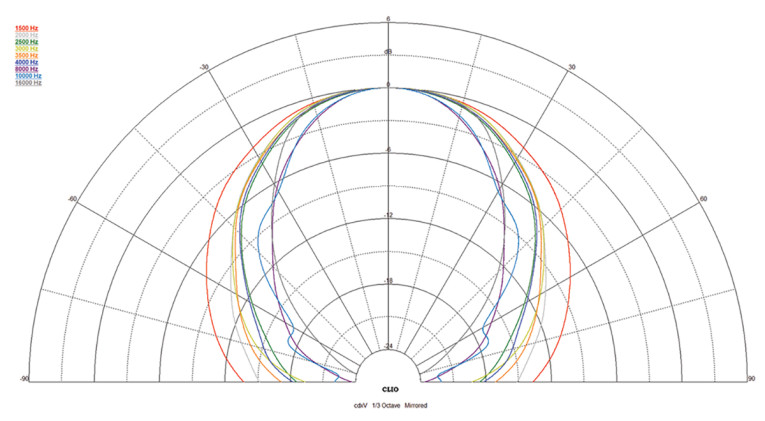

For the remaining series of tests, I set up the Listen, Inc. AudioConnect analyzer and 1/4” SCM microphone (provided to Voice Coil by Listen, Inc.) to measure distortion and generate time-frequency plots. For the distortion measurement, I mounted the Celestion CDX1-1412/H1-9050 combination in free-air, in the same manner as was used for the frequency response measurements, and set the SPL to 104dB at 1m (2.6V determined by using a pink noise stimulus generator and internal SLM in the SoundCheck V18 software). Then, I measured the distortion with the Listen microphone placed 10cm from the mouth of the horn. This produced the distortion curves shown in Figure 10. Note the extremely low third harmonic level.

Following this test sequence, I set up SoundCheck 18 to generate a 2.83V/1m impulse response curve for this driver/horn and imported the data into Listen’s SoundMap Time/Frequency software. Figure 11 shows the resulting cumulative spectral decay (CSD) waterfall plot. Figure 12 shows the Short Time Fourier Transform (STFT) plot.

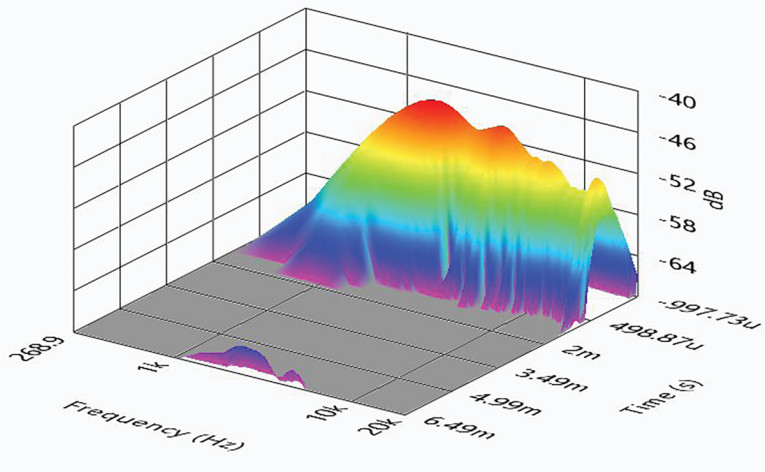
With all the above data taken as a whole, the UK-manufactured Celestion Neo CDX1-1412 is obviously a well-engineered 1” compression driver, exhibiting good performance, combined with Celestion’s usual excellent build quality.
For more information about this driver and other Celestion OEM pro sound products, visit the company’s website at www.celestion.com, or email inquiries to info@celestion.com. VC
This article was originally published in Voice Coil, June 2022.




